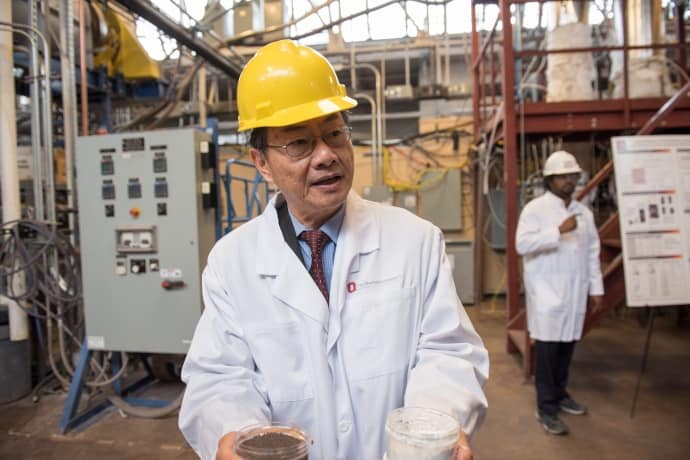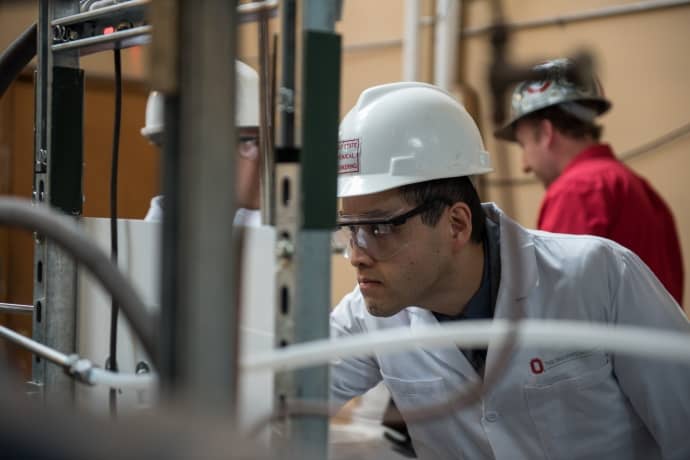The researchers, engineers from Ohio State University in Columbus, have published their findings in two papers in the journal Energy and Environmental Science. Developing a technology called coal-direct chemical looping combustion (CDCL), which project leader Prof Liang-Shih Fan and his team first invented five years ago, the engineers describe their technique as a stop gap for providing clean energy while the cost of renewable generation continues to fall.

In its first paper, the team describes how the process converts shale gas, and also states that it can be fuelled by coal and biomass. CDCL works by changing the source of oxygen for combustion from the air to iron oxide particles in a high-pressure moving-bed reactor. ‘Burning’ the carbon chemically releases the chemical potential energy of the carbon fuel as heat that can be used to power electricity-generating turbines, while producing a highly concentrated stream of pure carbon dioxide that can be used as a partial substitute for methane in a steam-reforming process to produce syngas, a mixture of carbon monoxide and steam that can be converted into methane and thence to useful chemical products via well-understood chemical engineering processes.
One problem with the technique encountered originally was that the oxide particles had a limited lifetime.“The particle itself is a vessel, and it’s carrying the oxygen back and forth in this process, and it eventually falls apart,” explained team member Andrew Tong. “Like a truck transporting goods on a highway, eventually it’s going to undergo some wear and tear.”

In the second paper, Prof Fan’s team explains how it has increased the lifetime of the oxide particles from 100 cycles in the original process to more than 3,000 cycles: an increase from an eight-day lifetime to more than eight months in continuous tests and laboratory and pilot plant scale. It did this by enclosing the iron particles within an aluminium-based skeleton. Returning to his trucking analogy, Tong explained: “We’re saying we devised a particle that can make the trip 3,000 times in the lab and still maintain its integrity.”
Prof Fan insists that his work, the result of more than 40 years’ research, is not intended to displace carbon-emission free processes. “Renewables are the future,” he said, declaring the research to be his life’s work. “We need a bridge that allows us to create clean energy until we get there – something affordable we can use for the next 30 years or more, while wind and solar power become the prevailing technologies.”




April 1886: the Brunkebergs tunnel
First ever example of a ground source heat pump?